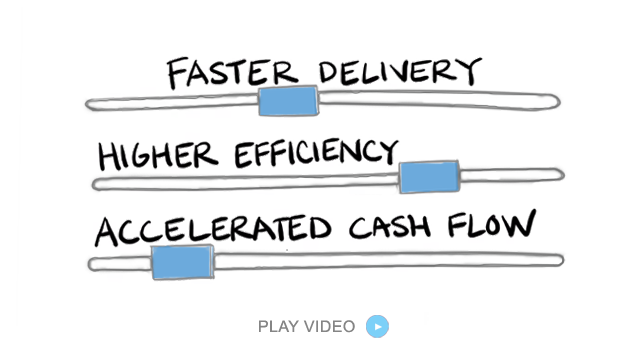Solving Supply Chain Disruptions with Integrated Planning: How Manufacturing IT Can Lead the Charge
The modern industrial manufacturing landscape has become a battleground of volatility. Global geopolitical shifts, raw material shortages, labor constraints, and sudden changes in demand patterns have turned once-stable supply chains into unpredictable mazes. For Manufacturing IT Managers, this means more than just maintaining infrastructure—it means playing a pivotal role in transforming supply chain resilience.
Supply chain disruptions can no longer be seen as anomalies—they're part of the new normal. To stay ahead, industrial manufacturers must evolve how they plan, schedule, and respond. One solution that’s rapidly gaining traction is the integration of PlanetTogether Advanced Planning and Scheduling (APS) software with established enterprise systems like SAP, Oracle, Microsoft Dynamics, Kinaxis, and Aveva. This integration isn't just about data flow—it’s about turning fragmented planning into a synchronized, agile, and intelligent operation.
In this blog, we’ll explore how IT leaders can drive digital transformation in supply chain planning, reduce disruption risks, and create a more responsive manufacturing environment through intelligent integration.
The Manufacturing IT Dilemma: Reactive vs. Proactive
Manufacturing IT teams are often pulled between firefighting system issues and pushing forward digital transformation. But when it comes to supply chain disruption, the cost of staying reactive is steep. Lost production hours, increased operational costs, missed customer commitments, and a damaged reputation can all stem from planning blind spots.
So, what’s the alternative?
A proactive IT strategy includes the deployment of APS systems like PlanetTogether and their seamless integration with core business platforms. By enabling real-time visibility and coordination across the supply chain, IT can empower operations to pivot quickly in response to change—turning data into decisions, and decisions into actions.

Why Supply Chain Disruptions Happen—and How Integration Solves Them
Let’s break down the root causes of supply chain disruptions and how integration can act as a preventative force.
1. Lack of End-to-End Visibility
When data is siloed across ERP, MES, WMS, and CRM systems, planners lack a unified view of demand, capacity, and inventory. This results in reactive planning and overreliance on outdated information.
Solution:
By integrating PlanetTogether APS with platforms like SAP or Oracle, IT can create a single source of truth for scheduling. This allows production planners to see how changes in demand, supplier delivery times, or equipment capacity impact the entire operation—within seconds.
2. Manual and Static Scheduling
Many facilities still rely on spreadsheets or disconnected systems for scheduling. These tools can’t adapt fast enough to handle dynamic changes, causing bottlenecks and missed opportunities.
Solution:
With PlanetTogether integrated into Microsoft Dynamics 365, for example, production schedules are continuously optimized using real-time data. Manufacturing IT can automate routine scheduling tasks and ensure planners have access to the best possible plan—even under changing conditions.
3. Delayed Response to Disruptions
When a supplier delay or machine breakdown occurs, most manufacturers scramble to re-plan. This causes inefficiencies across procurement, inventory, and labor utilization.
Solution:
Integration with Kinaxis enables advanced scenario planning. PlanetTogether can receive predictive inputs from Kinaxis about supply risks and instantly simulate multiple scheduling alternatives. Manufacturing IT becomes a key enabler of faster, smarter decisions.

Key Integration Touchpoints for IT Teams
When planning an integration between PlanetTogether and systems like SAP, Oracle, Microsoft, Kinaxis, or Aveva, here are the critical areas for Manufacturing IT to focus on:
Master Data Alignment
Ensure products, routings, resources, calendars, and BOMs are consistent across platforms.
Order Management
Synchronize sales, production, and purchase orders to reflect the latest priorities and constraints.
Capacity and Resource Data
Pull in real-time capacity information from MES or Aveva-based systems to inform scheduling.
Inventory and Material Availability
Integrate inventory data from ERP and WMS platforms to drive accurate material-constrained scheduling.
Feedback Loop
Push actual production data back into the plan to improve accuracy and support continuous improvement.

PlanetTogether: Built for IT-Led Integration
PlanetTogether was built with IT flexibility in mind. Its architecture allows for:
REST APIs for easy connectivity with cloud or on-prem ERP systems
Standard connectors for SAP, Microsoft Dynamics, Oracle, and more
Custom scripting tools to automate complex data flows and business logic
Secure data protocols to protect critical operational information
Scalable deployment options to match your IT environment—whether centralized, hybrid, or distributed
Whether you're deploying via Azure, AWS, or in a private cloud, PlanetTogether fits right into your tech stack and scales with your needs.
The days when supply chain disruptions were rare exceptions are over. Today, they’re persistent threats—but also catalysts for modernization. As a Manufacturing IT Manager, your ability to integrate systems, enable intelligent scheduling, and drive planning transparency is a strategic asset.
The integration of PlanetTogether APS with SAP, Oracle, Microsoft, Kinaxis, or Aveva is more than a tech project. It’s a business transformation initiative that enables your plant to pivot, adapt, and thrive—no matter what the supply chain throws its way.
Ready to solve your supply chain disruptions from the inside out? ? Contact us today to learn more about how PlanetTogether can help you achieve your goals and drive success in your industry.
Topics: Industrial Manufacturing, PlanetTogether Software, Integrating PlanetTogether, Drive Planning Transparency, Continuously Optimized Using Real-time Data, Simulate Multiple Scheduling Alternatives, Enable Intelligent Scheduling





















LEAVE A COMMENT